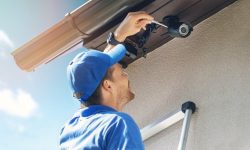What the Numbers Tell Us About False Fire Alarms
Fire departments in the United States reported 896,500 false fire alarms in 1980. Since that time this number has grown by more than 230 percent to a whopping 2.12 million, says the National Fire Protection Association (NFPA) of Quincy, Mass.
Is it any wonder fire departments and municipalities across the nation, both large and small, complain about the false alarm problems in their jurisdiction?
“False alarms and nuisance activations (in all occupancy types, not just homes) are problems to both the fire service and building occupants. False alarms tie up fire department resources. Nuisance activations interrupt other activities and may lead people to ignore the early warning of a smoke alarm. They are the leading reason for deliberately disabling smoke alarms,” says Marty Ahrens of NFPA, author of “False Alarms and Unwanted Activations, from U.S. Experience With Smoke Alarms and Other Fire Detection/Alarm Equipment.”
NFPA statistical data on false alarms is broken down into four categories: 1) malicious or mischievous false calls; 2) fire alarm system malfunctions; 3) unintentional calls; and 4) others, such as bomb threats. Most revealing is the fact that there were more than 721,000 system malfunctions that resulted in false and unwanted fire alarm calls to a local fire department.
According to by Michael Karter Jr., author of “False Alarm Activity in the U.S. — 2006,” published in April 2008, “Over the 1988-2006 period, the number of system malfunctions increased every year from 1988 to 1999 and increased an overall 63.7 percent from 550,500 in 1988 to 901,500 in 1999, changed little in 2000, and decreased 18.4 percent to 721,000 by the end of 2006.” Karter is with NFPA’s Fire Analysis and Research Division.
Although the number of false alarms by system malfunctions was lower in 2006 than in 2000, our work is hardly done. This month, we’ll take a look at some of the root causes of false fire alarms.
Need for Fire Code Education
One of the causes of false alarms cited in Karter’s report, released in April 2008, is system malfunctions. Karter claims that 34 percent of all false fire alarms are caused by problems in the fire alarm system itself. This includes installation errors through misapplication as well as misuse of established fire codes. 
A good way to assure that technicians know fire code is to provide them with the necessary code books. Fire alarm firms should also make available educational opportunities, such as those offered by a variety of organizations like Automatic Fire Alarm Association (AFAA), National Burglar & Fire Alarm Association (NBFAA) and National Training Center (NTC).
“Most of the installers in my area of the country don’t know fire code very well. In fact, most of them have never seen a code book, let alone own one,” says Nick Markowitz of Verona, Pa. Markowitz is a fire alarm installer, electrician and professional witness.
Fire alarm installers in particular should have NFPA 70, 72 and 101. Not only does the Code spell out basic, fundamental installation and application methods that are widely accepted by the authority having jurisdiction (AHJ), but it also takes proper application into consideration to avoid false alarms while assuring an alarm reliably takes place when necessary.
Residential Alarm Verification
Perhaps one of the biggest contributors to false and unwanted fire alarm activations is the automatic smoke alarm and smoke detector, especially where it comes to residential applications.
Smoke alarms are the single and multiple-station units that are commonly found in homes, especially new homes where the use of 120VAC smoke alarms with 9V backup is mandated.
Smoke detectors are commonly used in systems that can be and often are monitored by a supervising station, as defined in Section 11.7.8 of NFPA 72, 2007. In a supervising station monitored fire alarm system, one way to reduce the number of unwanted fire department dispatches is to use verification, something that central stations and local fire departments often are reluctant to do.
“Should fire departments elect to require verification, the risk of liability, not to mention the risk to life and property, could be high. However, firefighters face the risk of needless response, and these false alarms tax scarce resources,” says Ahrens.
In 2002, a study was conducted by Peter Finley of Vineland, N.J., in which an analysis was done concerning verification and fire department response. Following Ahrens’ writings, Finley found that the majority of fire departments do not allow verification in residential settings.
“In his study, 89 percent did not consider smoke from cooking or burnt food to be a false alarm, and smoke from candles or a fireplace was not considered a false alarm by 70 percent. Forty-five percent issued fine penalties or citations to repeat false alarm offenders. Responding departments indicated that, on average, actual fires caused 2.8 percent of the residential fire alarm activations; 2.6 percent were caused by smoke from cooking or burnt food; 3.7 percent were triggered by steam from a shower; 4.1 percent were due to smoke from fireplaces, candles, etc.; 23.8 percent were other accidental activations; and 31.2 percent, on average, were system malfunctions,” says Ahrens.
Section 11.7.8.2. of NFPA 72, 2007, actually allows for alarm verification in residences, providing it meets certain criteria: “Remote monitoring locations shall be permitted to verify alarm signals prior to reporting them to the fire service, provided the verification process does not delay the reporting by more than 90 seconds.” Markowitz says he has no issues providing fire alarm verification where the 90-second policy is strictly followed.
“I do not see it being a problem, but I would use it selectively, only allowing certain customers to use it. I have a couple of commercial customers with permission of AHJ where there are on-site supervisors who immediately investigate alarm causes,” he says. “I have the central call the customer immediately and if supervisor fails to acknowledge the call or exceeds the 90 seconds, [fire] trucks are dispatched.”
Markowitz says this procedure has worked well for him and his clients because it has prevented many unneeded firefighter dispatches.
Smoke Detector Technologies
Another issue that has a direct bearing on false and unwanted activations is the type of smoke detection technology used. For example, in a study conducted in 1995 by the Consumer Product Safety Commission (CPSC), it was found that 60 percent of the smoke detectors in a sampling of 263 residential fires in 15 U.S. cities between April 1992 and February 1993 failed to alarm because they were disconnected.
“The study results indicated about 60 percent of the detectors failed to alarm because they were disconnected from their power sources. Among those that were disconnected because the occupants experienced problems with them, the reasons most often cited by occupants were that it ‘alarms too often’ or that there were unwanted alarms related to cooking activities” (“Fire Incident Study,” National Smoke Detector Project, U.S. CPSC, Bethesda, Md., January 1995).
Although “Fire Side Chat” readers are mostly interested in issues centering on system-type smoke detectors, this study has relevance because of the technology predominately used in homes that employ single- and multiple-station smoke alarms.
 For another study conducted in Alaska in 2000, smoke alarms were placed in 58 home
For another study conducted in Alaska in 2000, smoke alarms were placed in 58 home
s in two rural Eskimo Inupiat villages and ionization smoke alarms in 65 homes in two other villages. The ensuing false alarm rate was consistently high where ionization technology was in use.
“Ninety-two percent of the ionization homes and 11 percent of the photoelectric homes had experienced at least one false alarm. Ninety-three percent of the 69 ionization false alarms were due to cooking as were four of the six (67 percent) of the photoelectric false alarms” (“Home Smoke Alarms – the Data as Context for Decision,” by Marty Ahrens, Fire Analysis and Research Division, NFPA, January 2008).
In this case, the study results seem to indicate that ionization smoke detectors are more prone to false alarms in a typical residential setting.
Cooking smoke was most often cited as the trigger, thus confirming what many fire professionals have known for some time: Ionization detection is more responsive to flash fires and other sources of combustion that involves a relatively small airborne particulate. This often includes aerosol sprays that have nothing to do with fire or fire alarm systems.
Another critical factor in the incidence of false and unwanted alarms is the placement of smoke alarms/detectors.
If you enjoyed this article and want to receive more valuable industry content like this, click here to sign up for our FREE digital newsletters!

Security Is Our Business, Too
For professionals who recommend, buy and install all types of electronic security equipment, a free subscription to Commercial Integrator + Security Sales & Integration is like having a consultant on call. You’ll find an ideal balance of technology and business coverage, with installation tips and techniques for products and updates on how to add to your bottom line.
A FREE subscription to the top resource for security and integration industry will prove to be invaluable.













